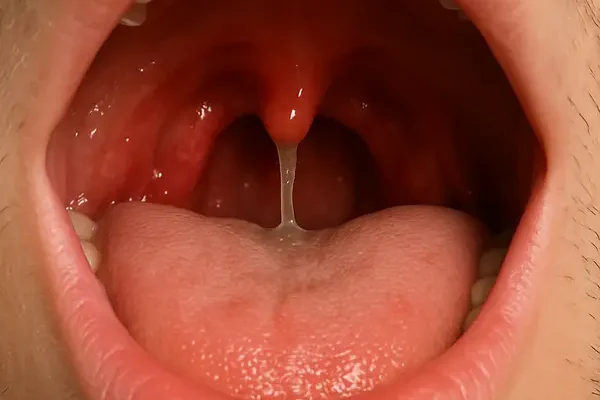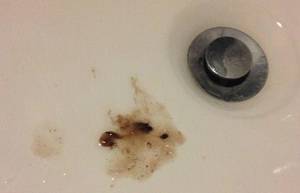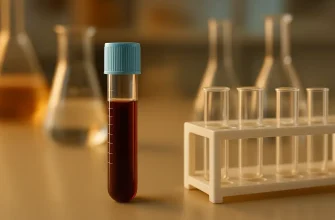Feeling like your throat is constantly coated with mucus is one of those annoyances that can drive anyone up the wall. For some, it’s just a seasonal nuisance, while for others it feels like their throat is staging a 24/7 slime production. You’re not alone — surveys show that around 30–40% of adults in the U.S. experience this issue at some point in their lives. Let’s break down why this happens, what it might mean, and what modern medicine has to offer.
Why Do I Always Have Mucus in My Throat? (Top Causes)
There are several common culprits behind that sticky throat sensation. Let’s break them down in a way that makes it easier to see which one might match what you’re going through:
- Postnasal drip: Imagine your sinuses as leaky faucets. Instead of draining outward, the extra mucus sneaks down the back of your throat. This often feels like you’re constantly needing to clear your throat or swallow. Many patients describe it as a “slow drip of glue” they can’t get rid of. If you notice a frequent urge to cough or wake up with mucus pooling in your throat, this could be your issue.
- Allergies: Think of allergies like a faulty smoke alarm — they go off even when there’s just harmless dust or pollen around. Your body mistakes these particles for threats and starts pumping out mucus as a defense. If your symptoms spike in spring or fall, or after dusting your house, allergies may be the main suspect.
- GERD (gastroesophageal reflux disease): Reflux happens when stomach acid travels upward, irritating your throat. The body responds by coating that irritation with extra mucus, like a firefighter dousing flames. If you often get heartburn, a sour taste in your mouth, or nighttime coughing, mucus from reflux may be the hidden cause.
- Respiratory infections: Whether it’s the common cold or a lingering bout of bronchitis, infections make your airway lining produce more mucus to trap germs. That’s why you often feel congested and phlegmy when you’re sick. If your mucus started with a cough, sore throat, or fever, infection might be to blame.
- Chronic lung conditions: Asthma and chronic bronchitis don’t just cause wheezing or coughing — they also come with mucus overproduction. It’s your lungs trying to protect themselves, but ending up clogging the airways instead. If you’ve had long-term breathing problems, wheezing, or persistent cough, this is worth discussing with your doctor.
Sometimes it feels like your throat is hosting a glue factory, right? One patient, a 47-year-old teacher from Ohio, described it as “constantly swallowing Elmer’s glue.” Her workup revealed chronic sinusitis with severe postnasal drip — something that improved dramatically after targeted allergy treatment.
Could It Be Something Serious? Red Flags to Watch For
While most causes are harmless and treatable, there are red flags to pay attention to. These don’t mean you should panic after one single episode, but if symptoms are frequent, persistent, or worsening, they’re worth a doctor’s attention:
- Blood in the mucus: A tiny streak once after a strong cough isn’t unusual, since small blood vessels can break. But if you notice blood more than once or in larger amounts, it’s a signal to get checked.
- Persistent sore throat or hoarseness: Everyone gets a scratchy throat from a cold or after yelling at a football game. The concern comes if it lingers for more than 2–3 weeks without improvement — that’s when doctors want to investigate further.
- Unexplained weight loss: Dropping a few pounds after changing your diet is one thing. Losing weight without trying, especially more than 5–10 pounds (2–5 kg) over a couple of months, should raise a red flag.
- Difficulty swallowing: Struggling once because you ate too fast is no big deal. But if swallowing food or even liquids becomes frequently uncomfortable or painful, that’s something that warrants evaluation.
- Ongoing cough lasting more than 8 weeks: A lingering cough after a cold may hang around for a couple of weeks. But if it stretches past two months, especially with mucus, it’s time for a deeper look.
These warning signs don’t mean a serious illness every time, but they’re signals your body is asking for professional attention.
How Do Doctors Diagnose Constant Throat Mucus?
Physicians use several methods to identify the root cause. Here are the most common diagnostic tools:
| Diagnostic Method | Accuracy (1–10) | Average Cost (USD/EUR) |
|---|---|---|
| Laryngoscopy | 9/10 | $200–$600 (€180–€550) |
| CT Scan of Sinuses | 8/10 | $300–$1,200 (€280–€1,100) |
| Allergy Testing | 7/10 | $150–$500 (€140–€460) |
| Esophageal pH Monitoring | 9/10 | $800–$2,000 (€750–€1,900) |
What each test feels like for the patient:
- Laryngoscopy: A thin, flexible scope is inserted through the nose or mouth to examine the throat and vocal cords. Patients often feel mild pressure or tickling, but numbing spray reduces discomfort. Results are immediate since the doctor can see what’s happening in real time.
- CT Scan of Sinuses: You lie down on a table while a scanner takes detailed images of your sinus cavities. It’s painless, though lying still can feel awkward. Results are usually ready within a day.
- Allergy Testing: With a skin prick test, tiny amounts of allergens are placed on the skin (usually the forearm or back). It feels like small scratches and can cause mild itching. Blood tests (IgE) are even simpler — just a blood draw. Results take a few days.
- Esophageal pH Monitoring: A thin probe is passed through the nose into the esophagus to measure acid levels for 24 hours. It can feel slightly uncomfortable at first, especially swallowing with the probe in place, but most patients adjust quickly. Results are analyzed after the recording period.
Newer imaging methods, like 3D sinus mapping, are increasingly used in academic centers to pinpoint chronic sinus issues with higher precision.
Treatment Options: From Medications to Cutting-Edge Solutions
Treatment depends on the underlying cause. Some options provide only temporary relief, while others address the root of the problem.
Over-the-Counter Medications
Antihistamines (loratadine, cetirizine) work by calming down the immune system’s overreaction to allergens. They’re like telling an overexcited guard dog to sit. These medications reduce sneezing, runny nose, and mucus buildup. They’re effective for allergy-related cases but don’t fix structural or reflux causes. Cost: about $10–$30 per month. Effectiveness: 6/10 for chronic mucus.
Decongestants (pseudoephedrine, phenylephrine) shrink swollen nasal passages, opening airways and reducing mucus. Imagine unclogging a blocked pipe — that’s how they work. Relief is usually quick, but it’s temporary and not recommended long-term due to side effects like increased heart rate. Cost: $5–$20. Effectiveness: 5/10 — mostly short-term comfort.
Nasal corticosteroid sprays (fluticasone, mometasone) reduce inflammation inside the nasal passages, which cuts down mucus production. They’re like turning off the faucet instead of just wiping up the puddle. Results build up over days to weeks. Cost: $15–$40. Effectiveness: 8/10, especially for allergy and sinus-related mucus.
Prescription Medications
Proton Pump Inhibitors (omeprazole, esomeprazole) and H2 blockers (famotidine) reduce stomach acid. Less acid means less irritation in the throat, which decreases mucus caused by reflux. Patients usually take them daily, and improvement often shows after 1–2 weeks. Cost: $20–$60 per month. Effectiveness: 7/10 when reflux is the culprit.
Nasal Irrigation Systems
Devices like Naväge or NeilMed Sinus Rinse flush the nasal passages with saline. Think of it as power-washing your sinuses — clearing out allergens, mucus, and irritants. Most patients feel instant relief, especially those with postnasal drip. It’s safe for long-term use. Cost: $15–$80 depending on the system. Effectiveness: 8/10 for sinus-related issues.
Biologic Therapies
For severe allergic asthma or chronic sinusitis with nasal polyps, biologics like Dupixent (dupilumab) have been FDA-approved. These are injectable medications that target specific pathways in the immune system. Instead of broadly reducing inflammation, they act with sniper-like precision. Patients often notice significant reduction in mucus and sinus symptoms. Cost: very high — often over $3,000 per injection. Effectiveness: 9/10 for carefully selected patients.
Supportive Measures
Some treatments don’t cure the cause but make life easier:
- Cough lozenges soothe irritation temporarily.
- Steam inhalation loosens thick mucus but doesn’t prevent new production.
- Lifestyle adjustments (avoiding spicy foods, elevating the head at night) reduce reflux-triggered mucus.
These methods are more about symptom relief than long-term fixes. Effectiveness: 4–6/10 depending on the individual.
A 35-year-old man from California with severe dust mite allergies found relief only after starting Dupixent — a game changer after years of failed standard therapies. Meanwhile, many patients with milder sinus issues manage well with daily nasal irrigation and occasional antihistamines.
Home Remedies That Actually Work
Home strategies can be surprisingly powerful when used consistently. Here’s what they mean in practice:
Humidifiers
Running a humidifier, especially at night, keeps the air moist and prevents the throat from drying out. This reduces irritation and cuts down on the body’s reflex to make more mucus. Ideally, it should be used daily during dry months (fall and winter). Patients often report improvement within a few nights of use. Cost: $30–$150 for a quality unit.
Saltwater Gargle
Gargling with warm saltwater works like a gentle rinse that reduces throat irritation and loosens thick mucus. It’s safe to do 2–3 times per day, especially in the morning and before bed. Many people feel relief almost immediately, though consistent daily use for a week gives the best results. Cost: practically free.
Warm Fluids
Sipping ginger tea, warm water with lemon, or broth isn’t just comforting — the heat thins out mucus and helps it move more easily. Think of it as turning jelly back into water. Drinking warm fluids throughout the day provides steady relief, with noticeable improvement in a few hours. Cost: minimal.
Trigger Control
Keeping bedding allergen-free (using dust-mite covers, washing sheets in hot water weekly) and reducing exposure to dust or pet dander makes a huge difference for allergy sufferers. This isn’t a quick fix, but over weeks to months, patients usually notice much less throat mucus. Cost: varies ($50–$200 for covers and cleaning supplies).
Each of these methods has its place: humidifiers and trigger control work best as long-term lifestyle strategies, while gargling and warm fluids provide faster day-to-day comfort.
Yes, grandma’s honey-lemon trick still has its place — but modern studies suggest the soothing effect is mainly from the warm liquid itself, not the honey’s magic.
Can Diet Play a Role in Throat Mucus?
Absolutely. Certain foods are known mucus culprits:
- Dairy products: Can thicken secretions in sensitive individuals.
- Caffeine and alcohol: Dry the throat, prompting more mucus production.
- Spicy foods: Trigger acid reflux, which in turn increases mucus.
On the flip side, anti-inflammatory foods such as ginger, leafy greens, and citrus fruits may support a clearer throat. Studies have shown that reducing high-fat meals can lower reflux-related mucus buildup ⧉.
Long-Term Outlook: Should You Be Worried?
For most people, chronic throat mucus is more frustrating than dangerous. If allergies or reflux are managed, the issue usually improves. Still, persistent or worsening symptoms should always be checked. ENT specialists and gastroenterologists can provide targeted solutions.
Patients often find that after a thorough evaluation and tailored treatment plan, their quality of life improves significantly. One large U.S. study reported that up to 70% of patients with chronic postnasal drip saw major relief after combined allergy and reflux management ⧉.
Editorial Advice
According to Reyus Mammadli, medical consultant, the biggest mistake patients make is ignoring the problem for too long or trying endless over-the-counter medications without proper diagnosis. “Persistent mucus isn’t just an annoyance — it can be your body’s way of signaling something deeper,” he emphasizes.
Our editorial team recommends:
- Keep a symptom diary (what you ate, where you were, what time of day symptoms appear).
- Don’t underestimate new technologies — from home pH monitoring kits to advanced biologics, modern medicine is rapidly evolving.
- If you notice red flags, seek a professional opinion sooner rather than later.
Your throat deserves clarity, not a mucus marathon.










I have an excessive amount of saliva in my mouth in addition to the phlegm in my throat. I have to keep a dish close at hand or else run to the BR. Does anyone else have this symptom? It’s usually worse at night.
Leanne
I had such a problem, it was not very pleasant for me, and I began to wash my throat with salt water, quit smoking and drank a lot of tea with honey. There is no slime anymore and I feel very strong relief
It’s sounds like we have similar issues but, I have no advice. I think my issue is sinus or adenoid related. I have had sinus issues (and vertigo) as a normal course of my adult life and take several things to counter act it daily – clarintin, sudafed, xyzal and singulair. This concoction seems to keep me in more control of the excess saliva, the thicker clear mucus and keeps the vertigo at bay. My sinus’ issues also cause me to grown “tonsil stones”. My internal doc doesn’t seem concerned but if I could find relief, that would be amazing. I cough all the time and sometimes feel like I can’t swallow when lying down unless I pinch the bridge of my nose. I’m not even sure which type of doctor to see. My ENT years ago said I had larger than average adenoids for an adult, but didn’t recommend taking them out. I have good oral hygiene, rarely drink and have never smoked. If you find an answer to your problem, please share!